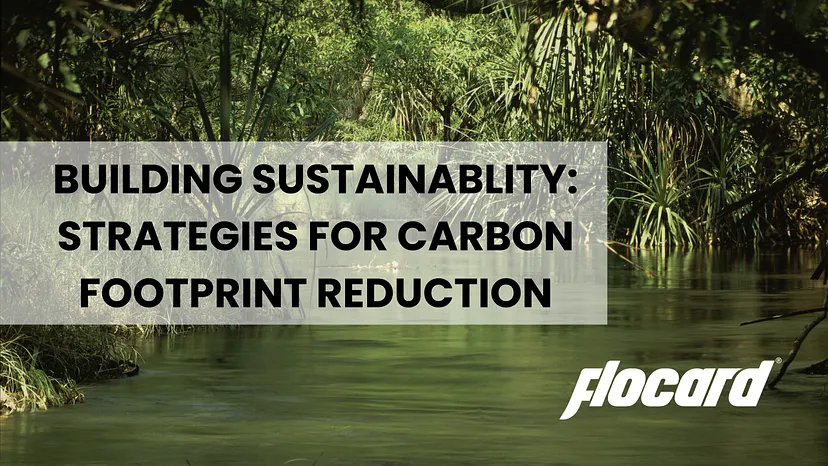Navigating Carbon Reduction: Strategies for Industries and Individuals

Bridging the Gap: Collective Efforts in Reducing Carbon Emissions
Introduction: The Imperative of Carbon Reduction
Every year, billions of tons of carbon dioxide are released into the atmosphere, heating our planet. A Carbon Footprint measures the amount of carbon dioxide associated with our activities, both industrial and individual, and is crucial in the context of global climate change. Reducing our carbon footprint is vital for mitigating climate change impacts, such as rising temperatures, extreme weather, and sea level rise. This necessitates shared responsibility among both industries and individuals to minimize carbon emissions.
Carbon Footprint Reduction: A Cornerstone of Climate Change Mitigation
Carbon emissions, a major contributor to climate change, originate from both industrial activities and individual actions. Industries release carbon dioxide through manufacturing processes, energy production, and transportation. These emissions not only contribute to climate change but also pollute our air and water, damaging our ecosystem. Additionally, individuals produce carbon emissions through activities like using electricity, transportation, and consumption of products and services.
To address climate change, actions to reduce carbon footprints are necessary. Rising global temperatures, more severe weather, and melting glaciers are major consequences of uncontrolled carbon emissions. To mitigate global climate change, the adoption of sustainable practices, the use of renewable energy resources, and the promotion of energy-efficient appliances at both the industrial and individual level are essential. By minimizing our carbon footprint, we can mitigate the catastrophic effects of climate change and create a more sustainable future for the next generation.
Strategies for Industrial Carbon Reduction
Industries can play a significant role in mitigating climate change by enhancing energy efficiency through advanced technologies and sustainable activities in the manufacturing process.
Optimizing Energy Consumption
Energy-saving strategies are essential for reducing energy consumption, improving productivity, and mitigating environmental impacts. Energy audits, which analyze energy consumption patterns and pinpoint areas for enhancement, are a valuable tool for industries. These optimizing strategies help industries reduce waste and identify the most cost-effective solutions to improve energy consumption patterns.
Various energy-efficient practices and technologies are available, including smart HVAC systems, LED lighting, advanced manufacturing techniques, and the utilization of renewable energy resources. These methods not only improve sustainability and reduce carbon emissions but also minimize operating expenses. By prioritizing energy efficiency, industries can save significant resources and help create a greener future.
Embracing Renewable Energy
Adopting renewable energy sources has several advantages, including reducing carbon emissions, achieving energy independence, and realizing long-term cost savings. Renewable resources like solar, wind, hydropower, and geothermal are becoming increasingly important in the global energy supply. Despite challenges such as high initial costs and integration hurdles, industries are progressively adopting renewable energy. For example, some manufacturing industries use wind power to sustain their operations or utilize solar energy through rooftop installations. Geothermal or biomass energy resources are alternatives for heating and cooling processes. Adopting renewable energy is crucial for achieving a sustainable and carbon-neutral future.
Implementing Sustainable Manufacturing
Sustainable manufacturing practices promote concepts like the circular economy and zero-waste manufacturing. In a circular economy, resources are reused, recycled, or repurposed to reduce waste and improve efficiency. The goal of zero-waste manufacturing is to eliminate waste entirely from the production system. Practices for achieving sustainable manufacturing include using renewable energy sources, reducing water consumption, using non-toxic materials, adopting sustainable engineering strategies, enhancing product environmental performance through life cycle assessment and sustainable design, removing defects and waste through lean manufacturing, promoting sustainability throughout the value chain, and investing in new technologies for development.
Sustainable manufacturing enhances social and economic development aspects in addition to environmental benefits. By embracing these practices, industries can improve competitiveness, profitability, popularity, and customer satisfaction while reducing poverty, inequality, and their environmental impact.
Advancing Carbon Capture and Storage (CCS)
Carbon Capture and Storage (CCS) technologies play a crucial role in mitigating industrial emissions by capturing carbon dioxide produced during various activities and storing it underground or using it for other purposes. Approximately 25% of CO2 emissions come from industrial sources, making CCS a vital component in reducing these emissions. CCS can help minimize global temperature rise and prevent the catastrophic consequences of climate change by reducing CO2 emissions into the atmosphere. Several industries are implementing CCS technologies, including power generation, cement production, and hydrogen production, showcasing the potential of CCS in reducing industrial carbon footprints.
Individual Strategies for Carbon Reduction
Individuals can offset their carbon footprint by adopting a sustainable lifestyle. This includes adopting eco-friendly products, recycling more, and choosing renewable energy sources for energy consumption.
Choosing Sustainable Transportation
Transportation is a major source of carbon dioxide emissions, leading to climate change and health problems. Switching to more sustainable transportation alternatives, such as public transportation, carpooling, cycling, or walking, can significantly reduce the carbon footprint. Additionally, Electric Vehicles (EVs) offer a more sustainable solution by running on electricity instead of fossil fuels, reducing dependence on fossil fuels and offering lower emissions, more affordable expenses, and more efficient performance.
Enhancing Household Energy Efficiency
Energy consumption in households significantly impacts the environment and contributes to global climate change. Adopting energy-efficient appliances, replacing fluorescent light bulbs with LED or CFL bulbs, and turning off lights and appliances when not in use can reduce individual carbon emissions. Sustainable living practices like recycling, composting, and limiting single-use plastics also have a positive environmental impact. By adopting these practices, households can reduce their energy consumption and contribute to a more sustainable future.
A Unified Approach to Carbon Reduction
Mitigating climate change and protecting our planet requires reducing our carbon footprint, both industrially and individually. It requires collective action and collaboration between industries, governments, and individuals worldwide.
Collaborate with FloCard for a Sustainable Future
FloCard is a platform that assists industries and individuals in creating focused initiatives to decrease their carbon footprint by identifying areas of high carbon dioxide emissions. By partnering with FloCard, industries and individuals can mitigate their environmental impact and achieve Net-Zero Carbon Emissions through campaigns like renewable energy, reforestation, and carbon neutrality, creating a sustainable future for all.
